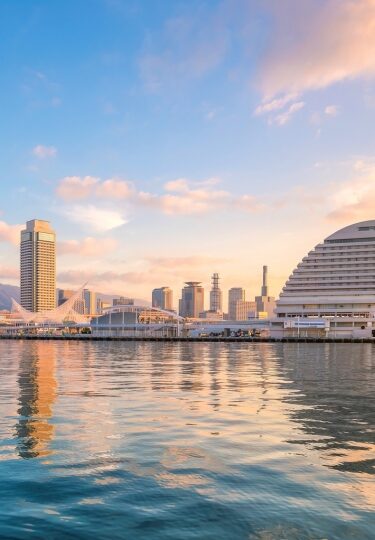Self-isolated for years, Japan retains ways of doing things that set it apart. That difference has helped make it attractive to artists for a century or more.
Its landmark wonders have become familiar to us all through countless photos, paintings, films and TV shows. Whether you have been to Japan or not, you will recognize many of those beautiful sights.
This list of the most famous Japanese landmarks spans a range from ancient castles to natural wonders and the world’s busiest pedestrian crossing. Inspiration, perhaps, to visit this most fascinating of countries.
Arashiyama Bamboo Grove, Kyoto
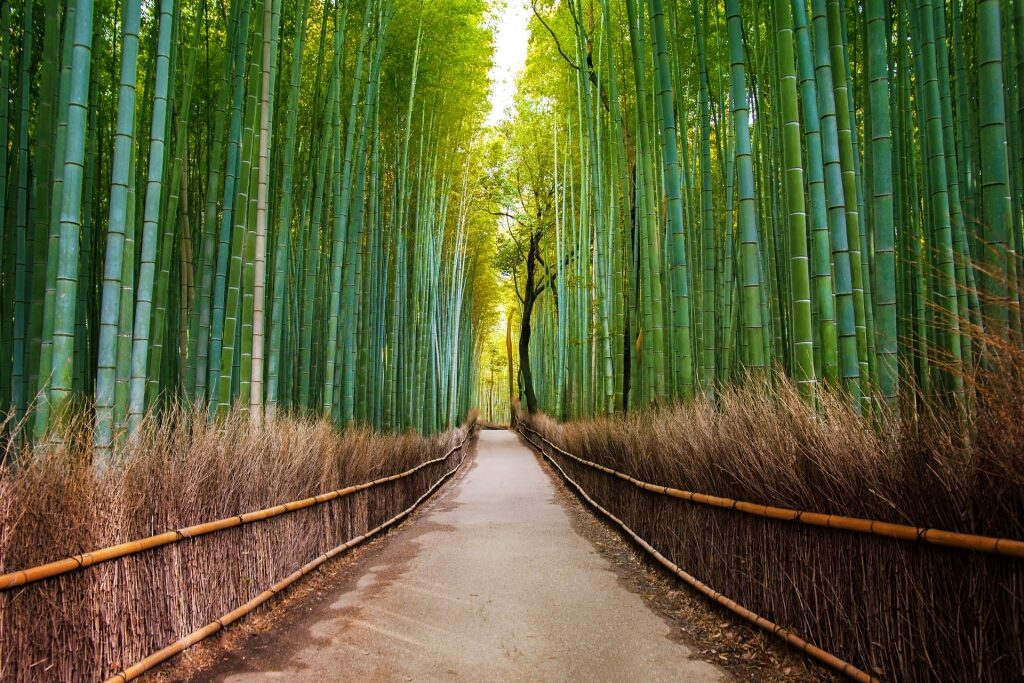
Arashiyama Bamboo Grove, Kyoto
The green bamboo of Arashiyama, swaying in a gentle breeze, is a hypnotic sight. No wonder this serene, shady forest has captured the imagination of poets and artists for hundreds of years. There’s almost perfect symmetry as you wander along the path, almost impossibly tall, slender bamboos arching gracefully overhead.
The Arashiyama Mountains are a scenic area on the western outskirts of Kyoto. It’s a popular area for hiking and cycling, with trails running through the bamboo forest.
The grove is outside Tenryuji, a Buddhist temple established in 1339. That took the place of a ninth century one that was Japan’s first Zen temple.
Another nearby landmark is the scenic Togetsukyo (“Moon Crossing Bridge”) which originally dated to 836. There are a number of souvenir shops on the bridge and rickshaw rides are a popular way to cross it.
Dōtonbori, Osaka

Dōtonbori, Osaka
Dōtonbori is the shopping district at the heart of modern Osaka. A sea of neon signage and modern buildings, its most famous sight is the giant running Glico Man breasting a tape.
This flashing neon logo for a food company has been a symbol of this Japanese city since the 1940s. It was the first large advert restored after the destruction of World War II.

Dōtonbori, Osaka
Nearby is the pedestrianized Ebisubashi (Ebisu Bridge), Osaka’s equivalent of Times Square or Piccadilly Circus. Ebisubashi links two large shopping areas and, like Times Square, is a fascinating place to people-watch. Another Osaka landmark nearby is the massive red claw-waving crab over the Kani-Doraku restaurant.
Machiya, Kyoto
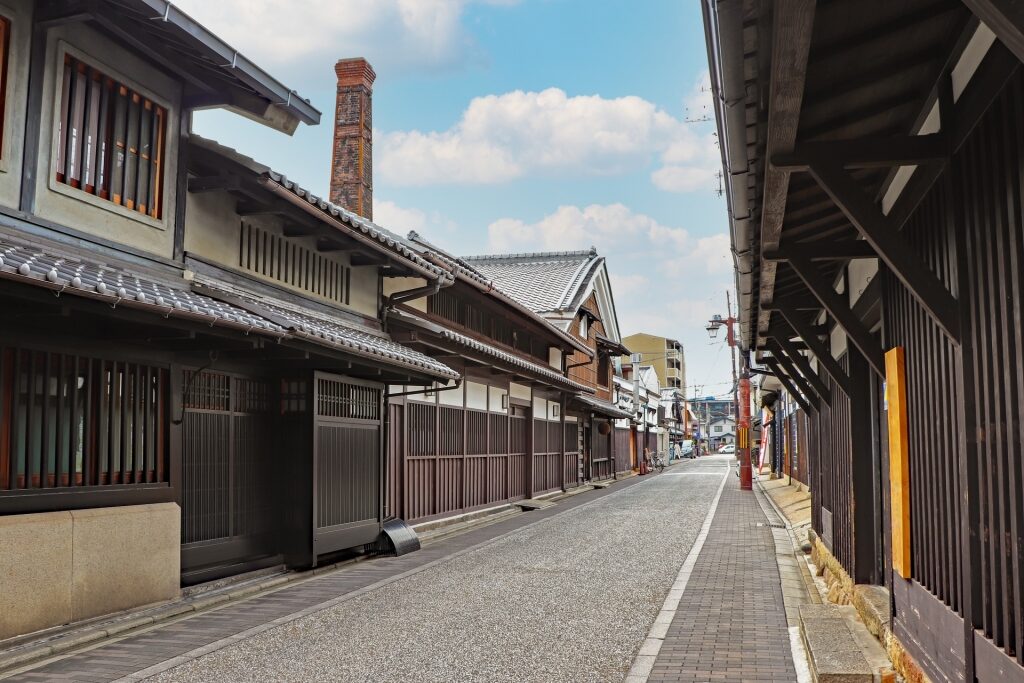
Machiya, Kyoto
Machiya (“town houses”) are the traditional 19th-century wooden houses of Japan, built long and narrow, as tax was paid on street frontage then. They were the homes, shops or workshops of merchants and wealthy artisans.
Kyoto, spared by World War II bombing, is lucky enough to have about 10,000 machiya left. They are very familiar from the city’s Gion and Pontocho geisha districts.
Kyoto is cold in winter and humid in summer, so “Kyomachiya” (Kyoto machiya) have layers of sliding doors to help adjust internal temperatures. Garden courtyards also help bring light into the long interiors.
Their recognition as a visitor attraction has boosted the ongoing restoration of machiya with traditional techniques. Many have been turned into restaurants, shops and even hotels and offer a wonderful insight into Japan’s more recent history.
Read: Best Things to Eat in Kyoto
Itsukushima Shrine, Hiroshima
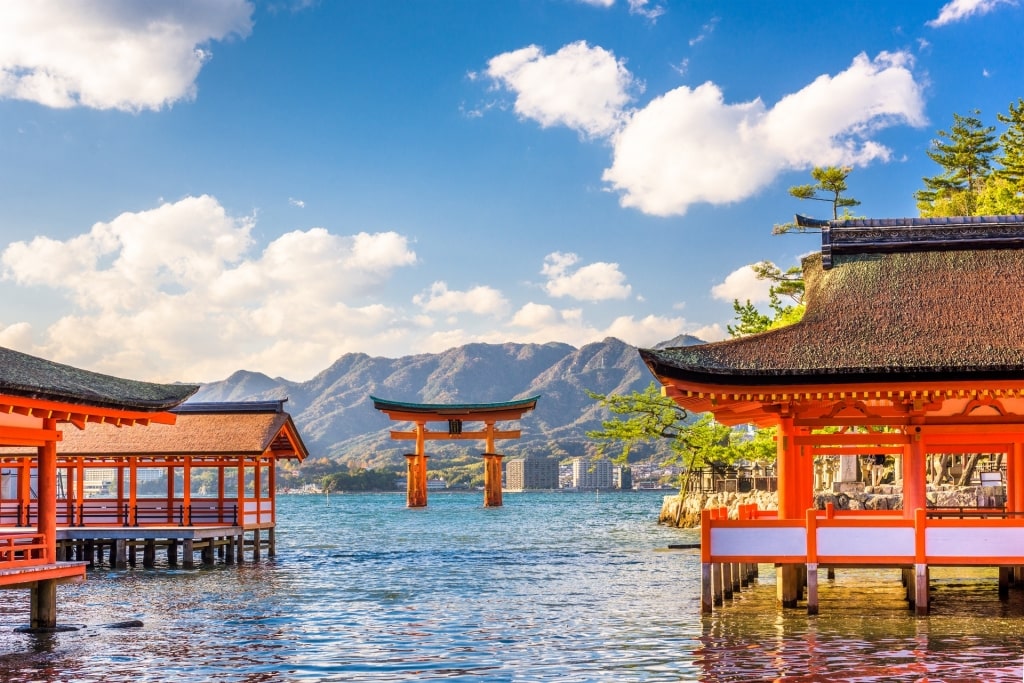
Itsukushima Shrine, Hiroshima
Shinto shrines have a great affinity to water, and the “floating” torii gate of Itsukushima is a picturesque and remarkable sight. Fifty feet tall, the scarlet gate seems to float on the sea at high tide.
The shrine is in the sea off Miyajima Island in Hiroshima Bay. As one of the most beautiful torii gates in Japan, it has been a popular subject for Japanese artists for centuries.
Its pillars are made of camphor wood, topped with cypress bark. The current torii dates to 1875 and takes the form of a wooden box weighted down with stones.
Now a Unesco World Heritage Site, the shrine is one of Japan’s National Treasures. It is dedicated to three Shinto deities who protect the imperial family, protect Japan and safeguard seafarers.
Read: Best Beaches in Japan
Senso-ji, Tokyo
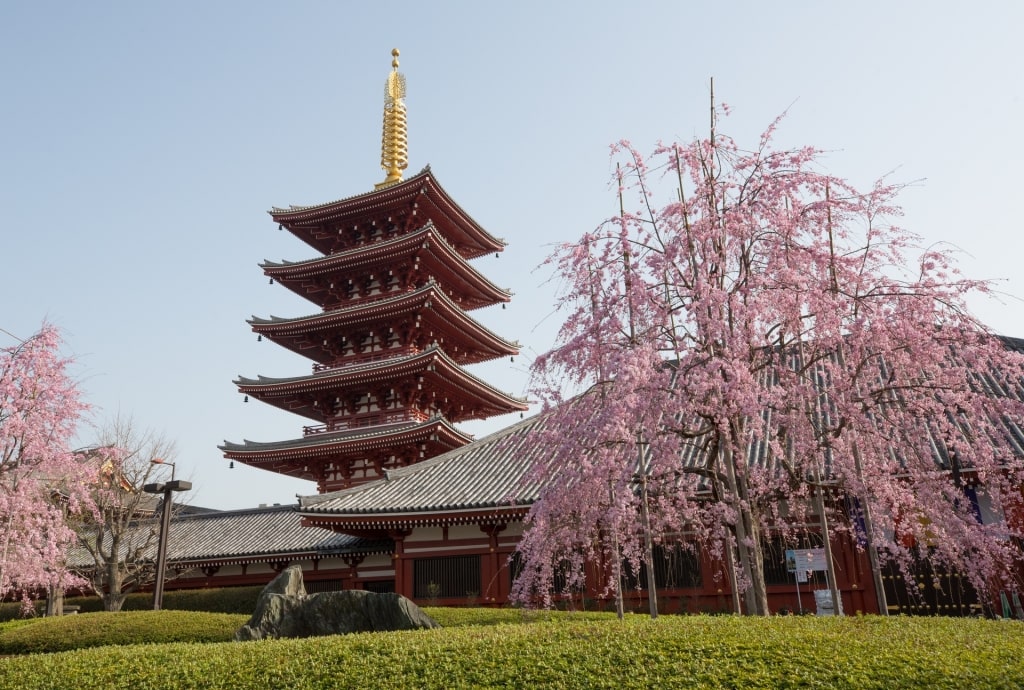
Senso-ji, Tokyo
The capital’s oldest Buddhist temple dates to 645 AD. Its red pillars and five-story pagoda are a must-see for visitors.
The approach street of Nakamise-dori was once a place to buy temple offerings. Now its shops and stalls trade in a wide range of Japanese souvenirs and tasty snacks.
The main entrance is the Kaminari-mon (“Thunder Gate”), identified by a 13-ft-tall red-paper lantern. It is flanked by the gods of thunder and wind.
The Hozo-mon (“Treasure-House Gate”), with its three lanterns, takes you into the inner temple. Here, it’s traditional to bathe yourself in incense from the giant bronze burner.
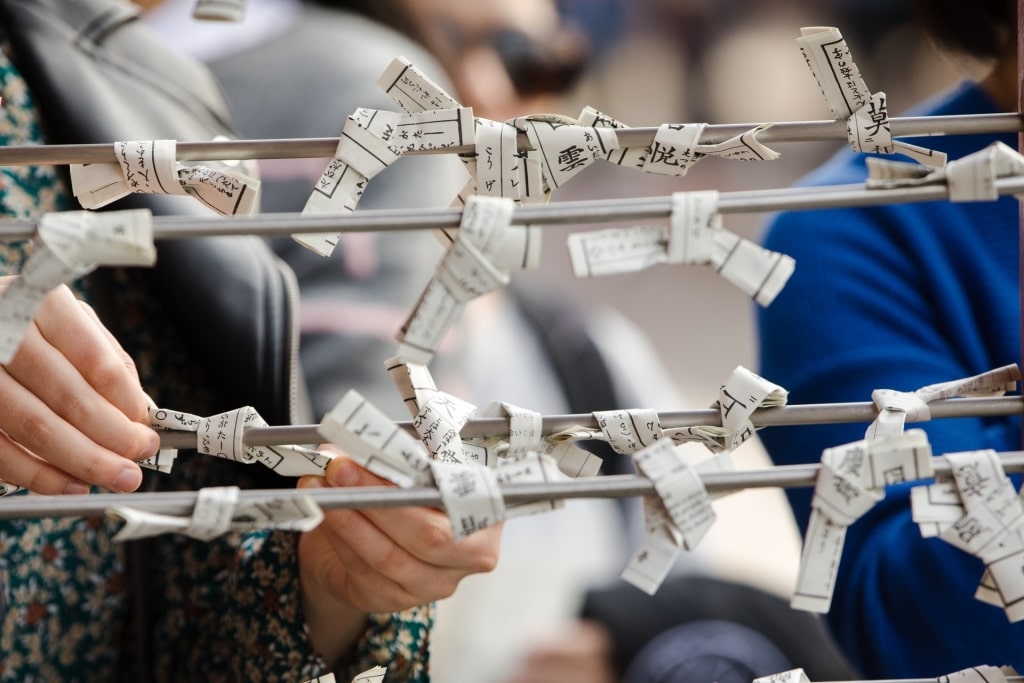
O-mikuji stall
You can also have your fortune told at an o-mikuji stall, or just find a quiet corner to take in the full experience. Amid the crowds, many people still come here to pray in what is still an active temple.
Osaka Castle, Osaka
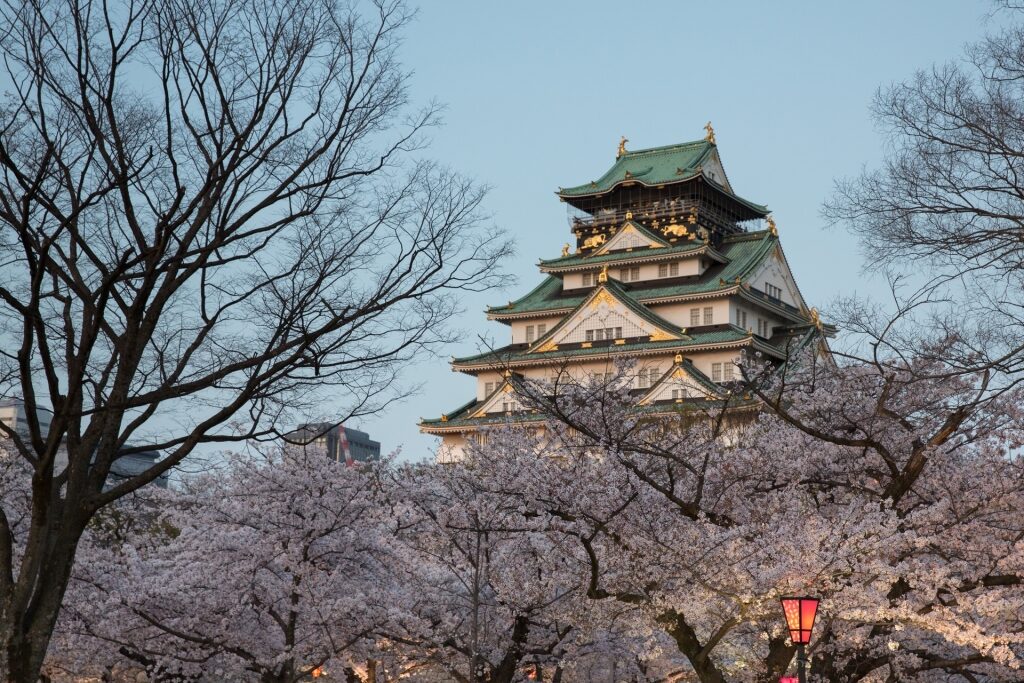
Osaka Castle, Osaka
Visible from much of the city, the five-story tower of Osaka Castle is a striking landmark. The ornate structure is not all it seems, however.
Built in 1583, the castle has had to be restored many times since, following events such as sieges or lightning strikes. Now with a concrete core, it remains a faithful copy of the traditional design.
The ornate roof is covered with gold leaf and gold tigers, a showcase of wealth to intimidate the enemy. The eight giant golden fish with tiger heads, perched on the eaves, were a symbol of protection against fire.
Inside, a museum gives the history of the building and you can enjoy good views across Osaka. There are 13 other historic buildings within the castle grounds.
Shibuya Crossing, Tokyo
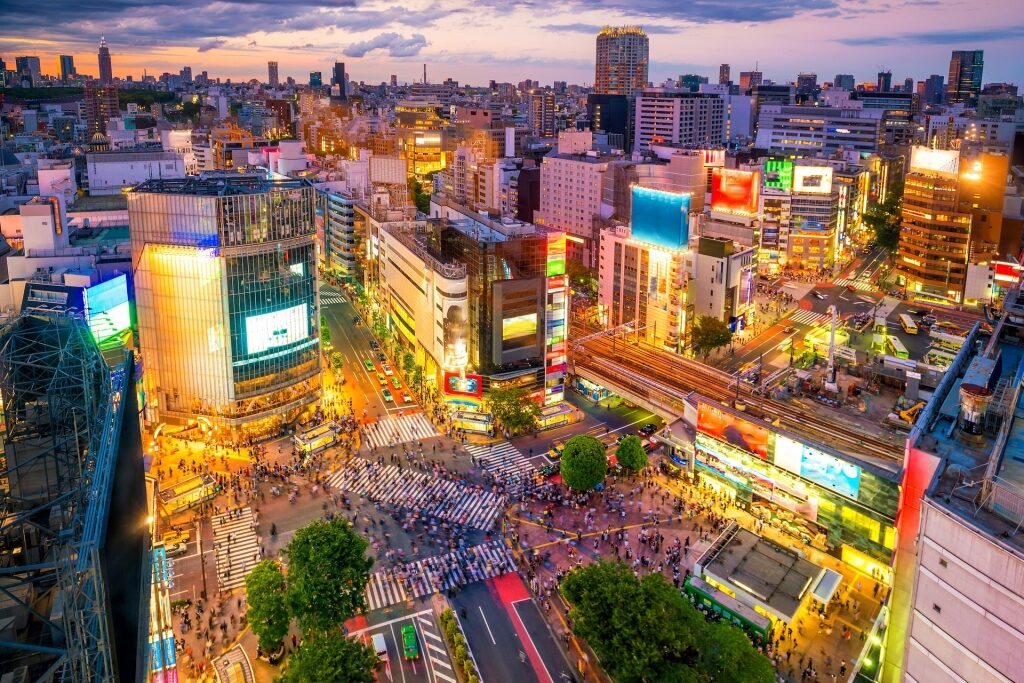
Shibuya Crossing, Tokyo
One of the most famous sights in the world, never mind Japan, Shibuya sees more than 1,000 people cross with every light change. It is the world’s busiest pedestrian crossing and an unmissable sight for any new Tokyo visitor.
Pedestrians converge from five different crossings during every two minute cycle. It’s a mesmerizing sight and it’s very Japanese that so many people could do it at once with such politeness and self-discipline.
Giant video screens on the canyon of skyscrapers around add to the spectacle. The best viewing point is the Starbucks outlet high above the crossing, the company’s highest branch in the world.
During rain showers, the crowd of pedestrian flowers with multicolored umbrellas. When this happens, the crossing becomes an even more photogenic sight.
Mount Fuji, Shimizu
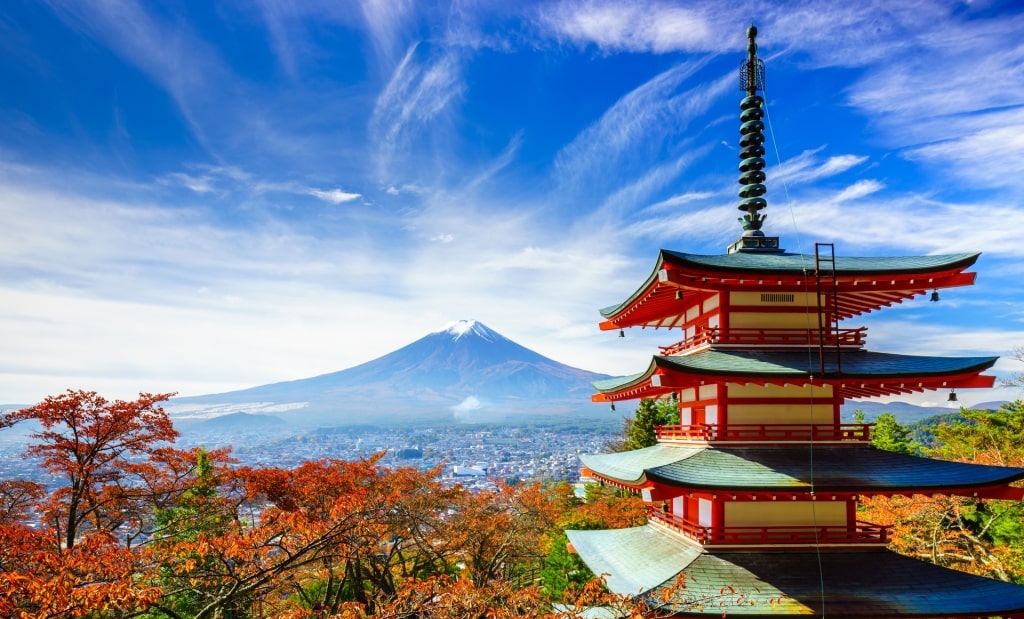
Mount Fuji, Shimizu
No list of Japan landmarks would be complete without Mount Fuji, whose image fills paintings, photos and posters in every souvenir shop. Its near-perfect cone, the tallest peak in Japan, looks even lovelier topped with snow in winter.
One of the best places to see it is Oshino Hakkai, once a point to start a pilgrimage up the sacred Japanese mountain. It has eight ponds, eight being a significant number in Buddhism, which are fed by water from the mountain’s snow.
In summer, the climb to the 12,380-ft summit attracts thousands of hikers. Many start at night just to see the sunrise here. This sunrise, in the “Land of the Rising Sun”, is very special. Called “Goraiko” (Great Sunrise), it’s something many Japanese wish to experience once.
Read: Most Beautiful Places in Japan
Himeji Castle, Kyoto
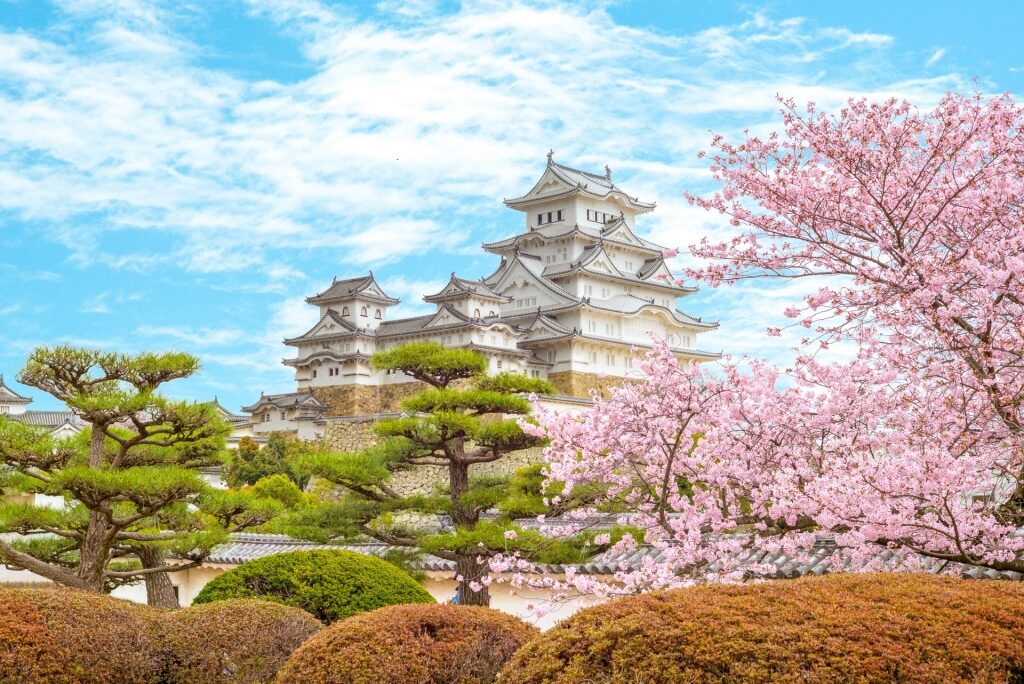
Himeji Castle, Kyoto
Japan’s most famous castle guarded one of the approaches to the former capital of Kyoto. Its feudal Edo era architecture is now recognized as a National Treasure and a UNESCO World Heritage Site.
The present castle dates to 1609 and is one of the few in Japan to survive fire, earthquakes and World War II bombing. The striking white walls and soaring roofs give it the name of White Heron Castle.
Make your way to the top floor for a good view of the dozens of buildings that make up the castle complex. You can also enjoy a good view over the town of Himeji.
In spring, the cherry blossoms in the extensive grounds make for a spectacular sight.
Read: Two Days in Kyoto
Imperial Palace, Tokyo
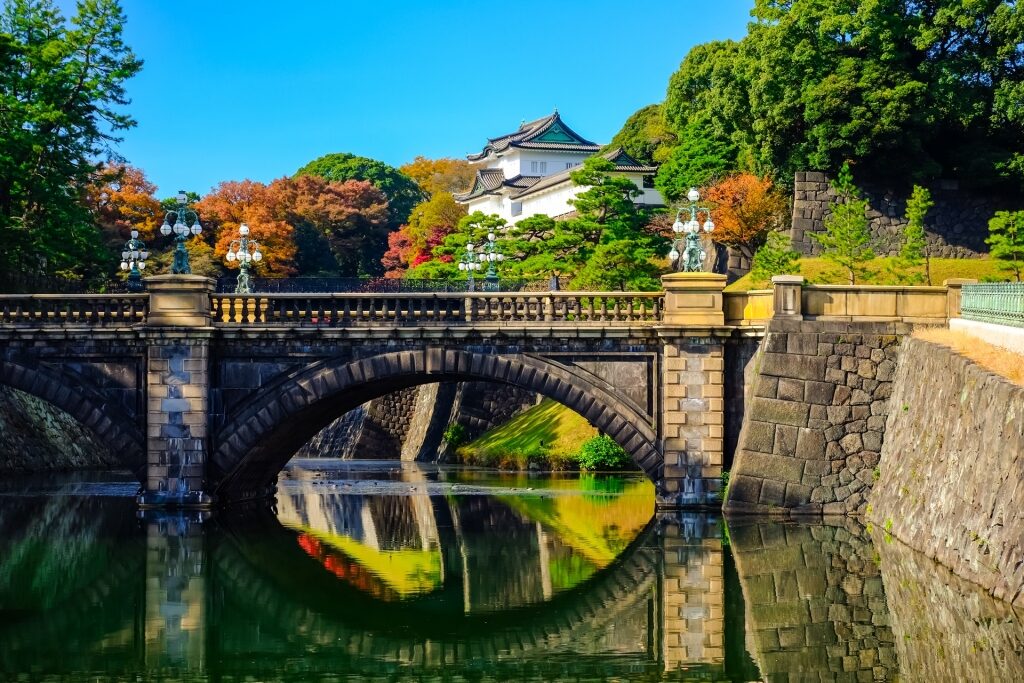
Imperial Palace, Tokyo
This has been the home of the Japanese Imperial Family since Japan moved its capital from Kyoto to what was then the town of Edo in 1868. The remains of the former 15th century Edo Castle can still be seen within the East Garden, one of the most beautiful gardens in Tokyo.
Bombed during World War II, the Imperial Palace was not fully rebuilt until the 1980s. It sits within extensive grounds and gardens behind thick walls and a moat.
The grounds hold almost a quarter of Tokyo’s trees but only the East Garden is open to the public. The rest of the grounds, but not the palace itself, can be seen on regular tours.
The palace is a particularly lovely sight in sakura, or cherry blossom season. The reflection of the pale pink cherry blossoms in the waters of the moat make for a memorable photo.
Read: Three Days in Tokyo: The Ultimate Itinerary
Nara Park, Kyoto
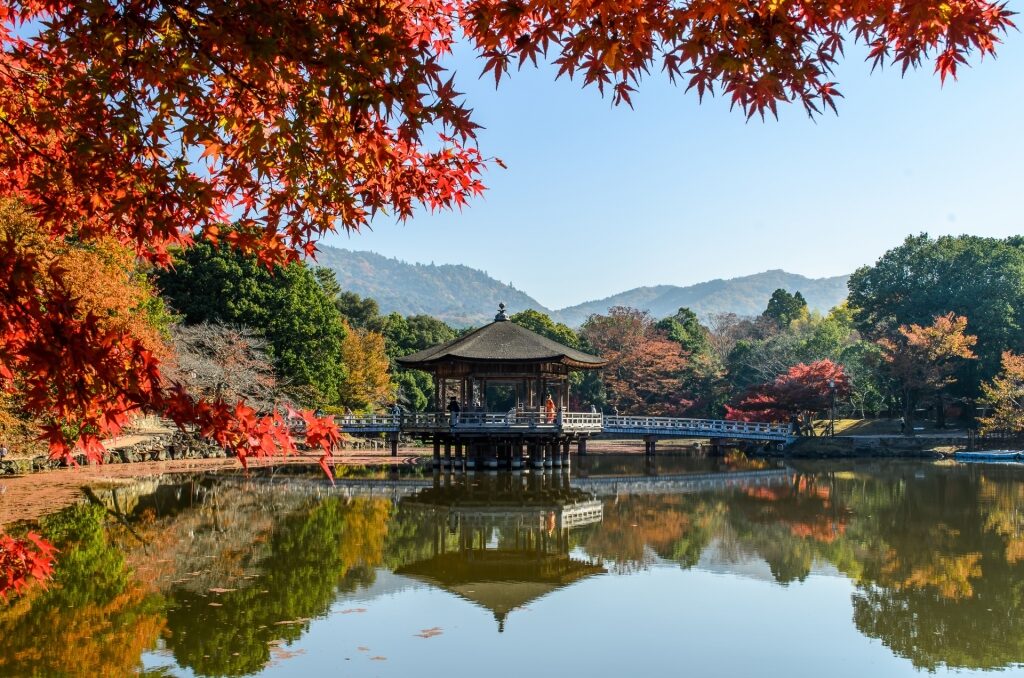
Nara Park, Kyoto
This park is one of the oldest in Japan but most visitors come for its sika deer. Some 1,400 roam freely, tame enough to eat the “shika senbei” (deer crackers) that visitors are encouraged to buy.
The deer have learned to bow so visitors feed them treats. Once you have run out of food, wave to them and they will go and look for another benefactor.
The lovely park covers a vast area filled with trees and has several historic buildings. Todaiji Temple was once the world’s largest wooden building and holds the world’s largest bronze statue of Buddha.
The five-storied wooden Kofukuji pagoda, the second tallest in Japan, was originally built in 730 and restored in 1426. It is now a symbol of the city of Nara.
Kobe Port, Kobe
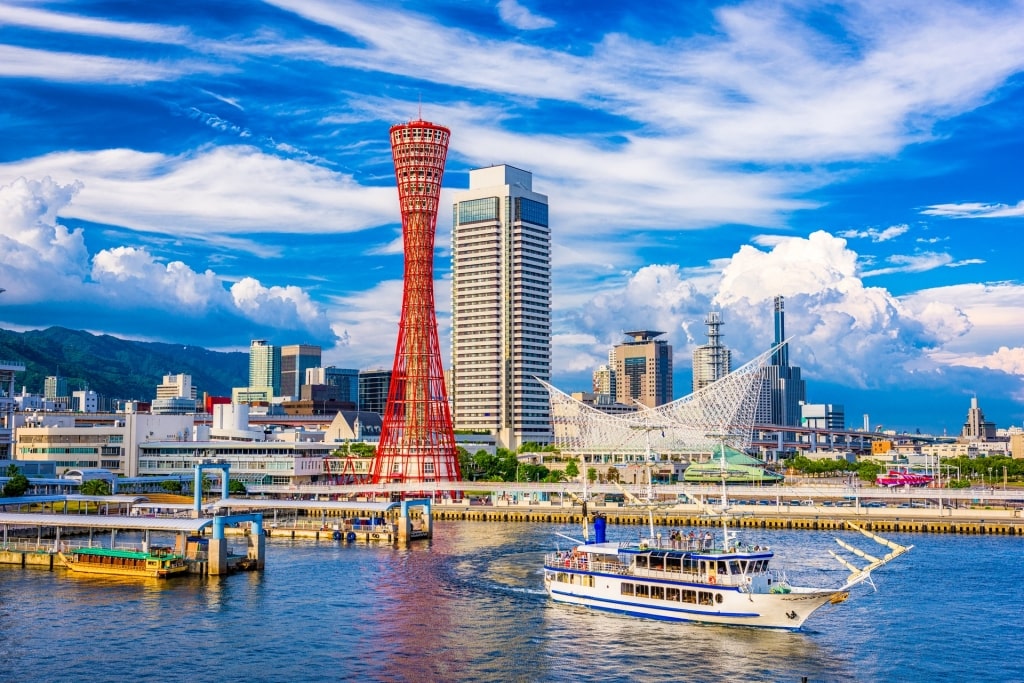
Kobe Port, Kobe
Kobe’s regeneration after the devastating earthquake of 1995 is symbolized by its modern waterfront. This tribute to the city’s resilience is now as popular with visitors as it is with Kobe’s dating couples.
Facing Osaka Bay, the port sits at the foot of Kobe Port Tower. Well-lit landmarks such as the Harborland shopping complex and Mosaic Big Ferris Wheel make for a night view loved by photographers.
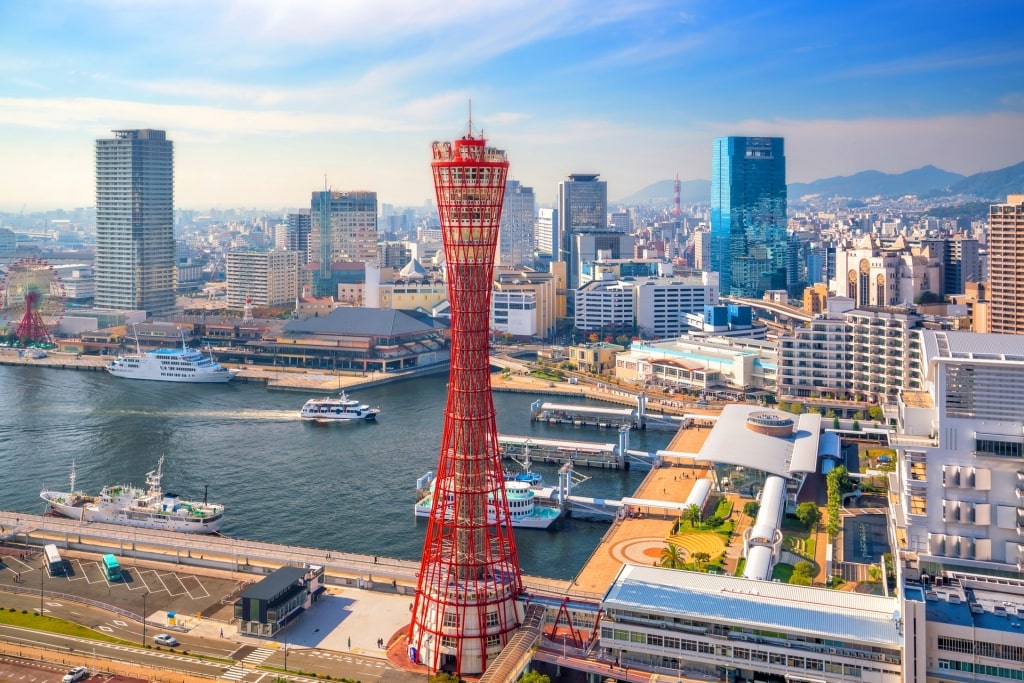
Kobe Port, Kobe
Meriken (“American”) Park is an esplanade along the water, a great place to stroll and take in the sights. Modern art installations and fountains make for diversions but people watching is just as much fun.
The Kobe Maritime Museum is another highlight, with some lovely historical boats. It also has Kawasaki’s exhibits of its Shinkansen trains, planes and motorcycles.
Fushimi Inari Taisha, Kyoto
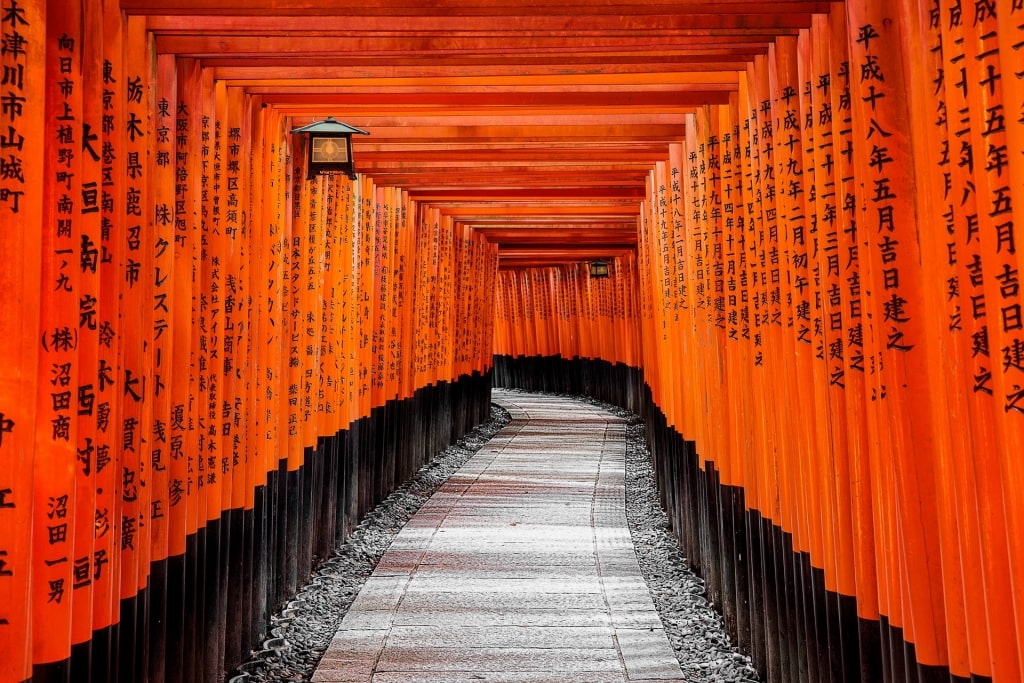
Fushimi Inari Taisha, Kyoto
The path of orange-red torii gates leading up this Shinto shrine is immediately recognizable. They mark the path up to the shrine and on to the peak of sacred Mount Inari.
While pilgrims climb to the summit, many visitors are happy with the views over Kyoto from about halfway up. Several cafés and restaurants make a great place to rest.
As well as the 10,000 torii, you will also see many statues of a fox, considered the sacred message of Inari, the Shinto god of rice. They are often white, a color symbolizing that this sacred fox is invisible to the naked eye.
You can buy a fox in the form of rice crackers, amulets and many other good luck charms. A fox face mask, handmade from paper, is very popular with Japanese visitors.
Hiroshima Peace Park, Hiroshima
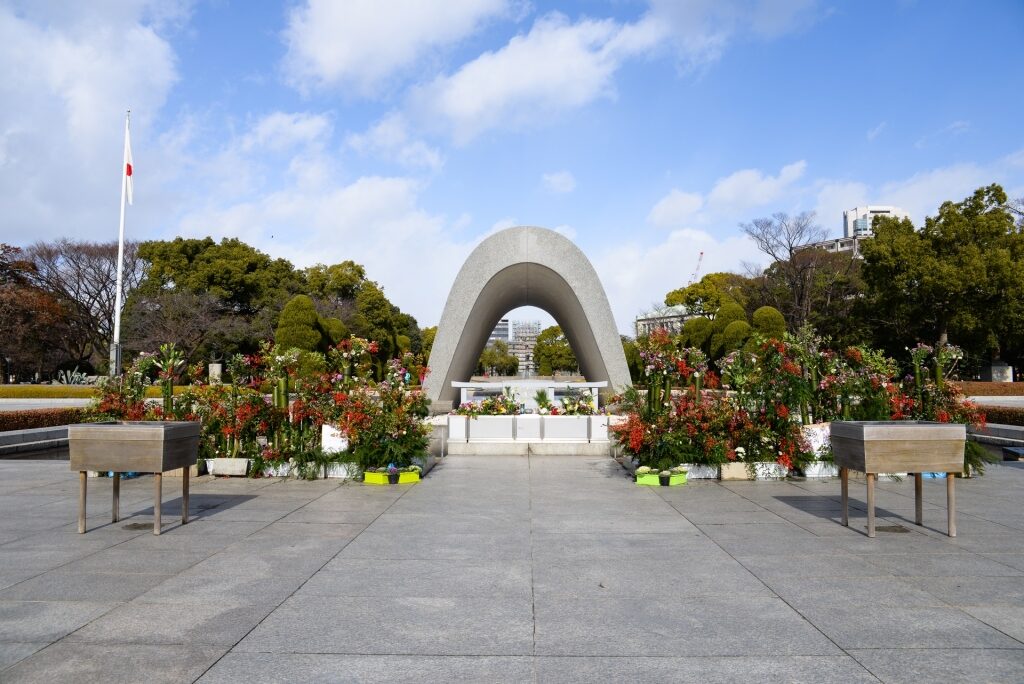
Hiroshima Peace Park, Hiroshima
Hiroshima’s most visited attraction is dominated by the A-Bomb Dome, or Hiroshima Peace Memorial. It’s a stark memorial to the atomic bombing of the city in World War II.
The dome, once at the commercial heart of Hiroshima, was one of the few buildings to survive. It’s now a Unesco World Heritage Site, a symbol of peace and remembrance.
At the center of the beautiful park itself is a cenotaph listing all the victims. Even more moving is the Children’s Peace Monument, surrounded by paper origami cranes sent from all over the world.
The Memorial Museum gives the history of the city before, during and since the bombing. Any dark memories are dispelled by a moving sense of the city’s lasting mission for peace.
Read: Top Things to Do in Hiroshima
Kinkaku Temple, Kyoto
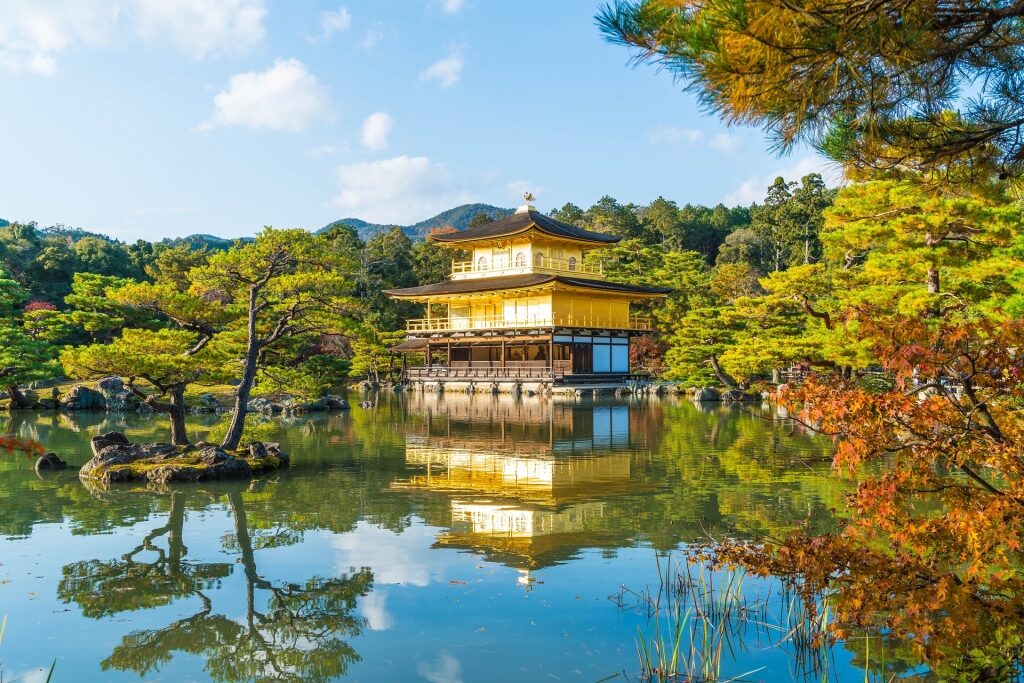
Kinkaku Temple, Kyoto
Kinkaku-ji (“Golden Pavilion”) takes its name from the gold leaf covering its top two floors. A similar temple covered in silver, Ginkakuji, sits on the other side of Osaka and is a quiet alternative to Kinkakuji for those wishing to avoid crowds.
The Golden Pavilion overlooks a large pond, where its floating reflection adds to its photogenic appeal. Burnt down several times in its history, it was most recently restored in 1955.
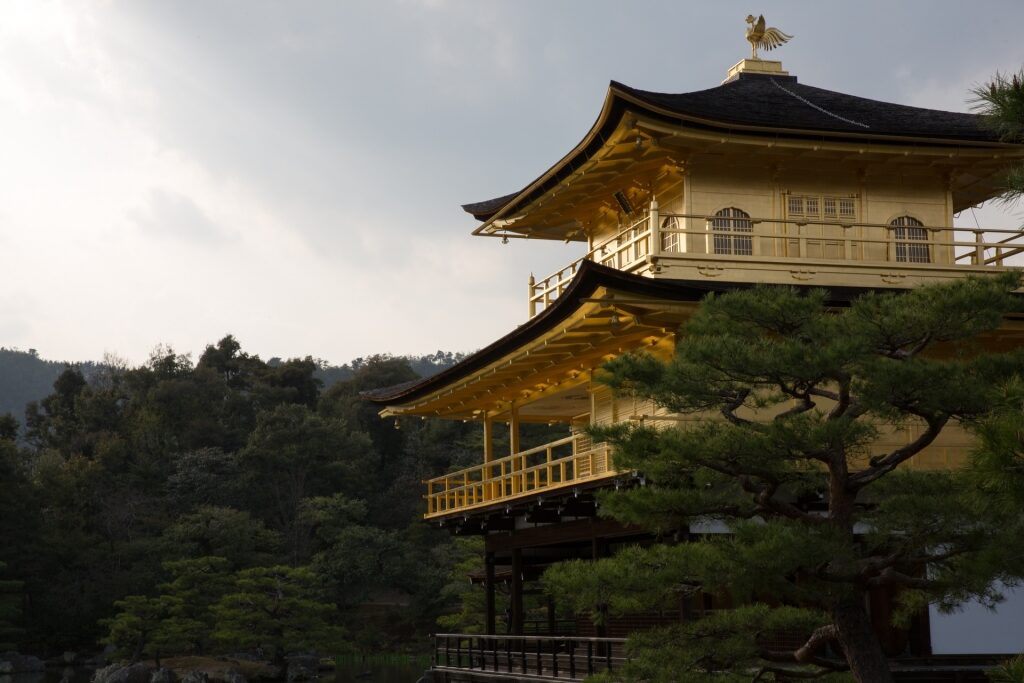
Kinkaku Temple, Kyoto
Its three floors are a model of Japanese architecture from three different periods. The ground floor is of white plaster and timber, the second in the samurai style of Bukke style, and the top in Chinese style.
The gardens of this famous Japanese temple and Sekkatei Teahouse are worth a visit in themselves. The whole is now a Unesco World Heritage site.
Tokyo Tower, Tokyo
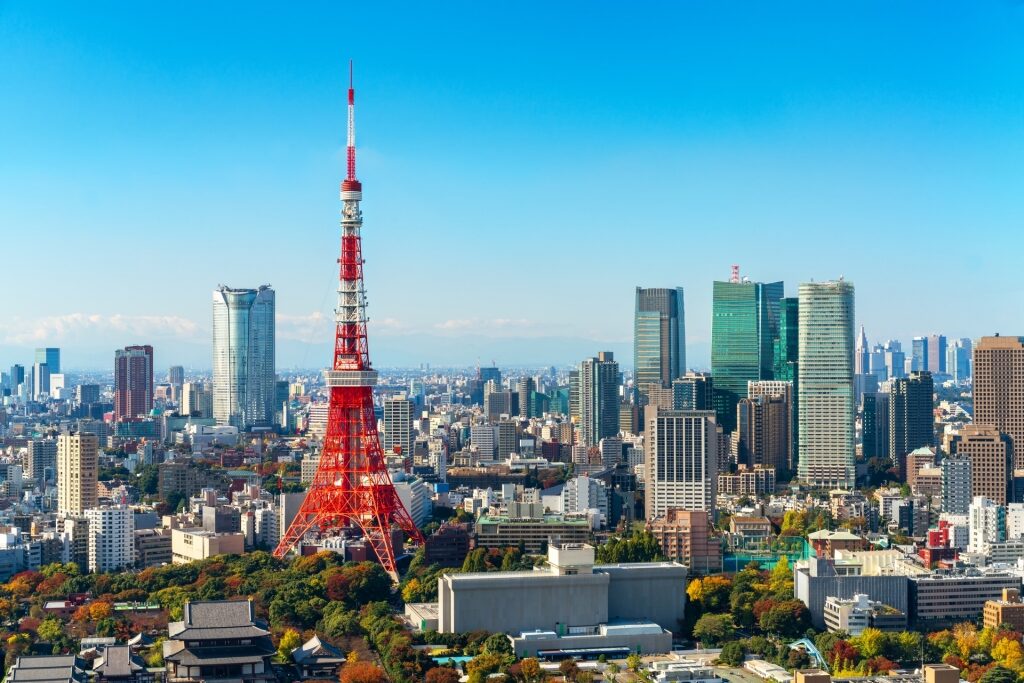
Tokyo Tower, Tokyo
Japan is home to some of the most modern cities in the world, and yet it has as much reverence for the past as it has for the future. So it’s maybe no surprise that the Tokyo Tower remains a city favorite despite more modern rivals such as the Tokyo Skytree, the tallest structure in Japan.
Tokyo Tower was opened in 1958 with a design based on the Eiffel Tower. At just over 1,000 feet, it was then the tallest structure in the country.
Built for the national broadcaster, NHK, the red and white tower has three tiers. The top is a viewing platform from where you can see as far as Mt. Fuji.
The bottom level has restaurants and souvenir shops. In the middle is an observatory with a vertigo-inducing window—try it if you dare!
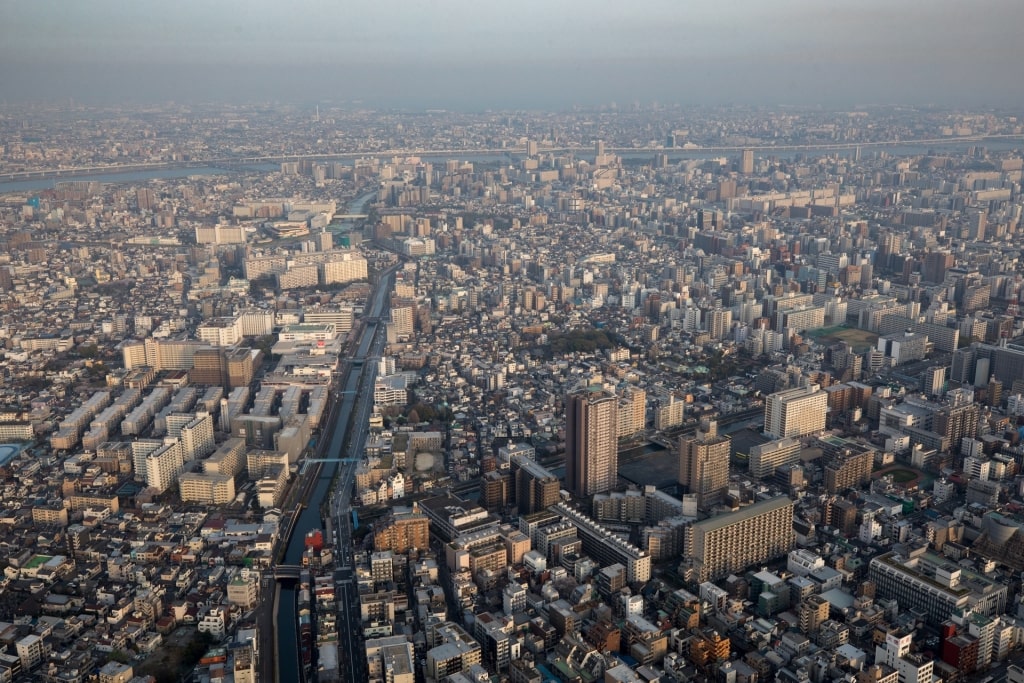
Tokyo
Inspired by these famous landmarks? Browse our cruises to Japan to find the perfect itinerary to take in the sights of this amazing country.
